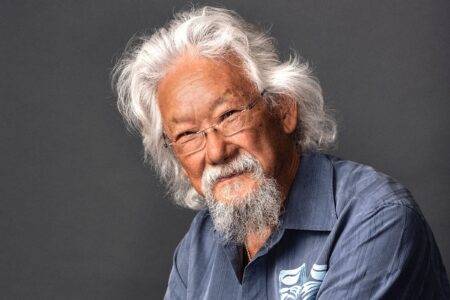OP/ED: Sports could be a new industry for Grand Forks
Much has been said in recent years about the importance of tourism in our area, as in other parts of the province; coupled with the subject of tourism is economic development.
In recent years a new sector of tourism has surfaced – sport tourism. It may come as a surprise that sport tourism is the fastest growing segment of the tourism industry in Canada. It yields approximately $3.4 billion in annual spending by domestic travellers alone.
Sport tourism is defined as, “anything that involves people travelling to a location from outside the region to participate in or watch and enjoy a sport event,” according to Rick Traer, chief executive officer of the Canadian Sport Tourism Alliance.
He says that sport tourism is, “a grassroots economic development initiative.” Recognizing its importance the B.C. government has published a 54 page Sport Tourism guide.
Rick Traer states that the sport-tourism segment of tourism is more likely to stay strong even when financial markets weaken. He says, “Sport tourism has become the stabilizing force within the tourism industry during times of volatility.”
Recent data from Statistics Canada, informs us that from 2008 to 2010, spending associated with the Canadian sport tourism industry increased 8.8 percent while for the same period tourism demand for the Canadian tourism industry as a whole decreased 0.7 percent. This data once again confirms sport tourism as a critical economic driver in communities across Canada.
Traer asserts the growth is being driven by intercommunity events, “almost every weekend in every community across the country, you can find some sort of athletic competition – whether it’s an intercommunity tournament, or provincial championship, or school sport.”
Sport tourism is a relatively new concept and has become the subject of an increasing level of both academic and government interest. It is perceived to be important because of its economic contribution as well as other influences such as the impact on community well-being and the sense of pride that sport tourism may engender.
Sustainable tourism in its purest sense is an industry committed to making a low impact on the natural environment and local culture, while helping to generate income and employment for locals.
For visitors, a Tourism Destination Area means having a variety of quality, unique and appealing experiences in a central location. This critical mass of product combined with the appropriate tourism services and infrastructure leads to an anchor destination in which numerous activities/experiences can occur. Remember visitors do not see geographic or political boundaries; they see memorable locales and welcoming residents.
In Grand Forks we have a wonderful example of sport tourism in action with the Grand Forks International Baseball Tournament (GFI). Several years ago I wondered how much on average the event was generating for this community and area. My sense was perhaps $250,000 per year.
I have been told by others who know more than I do about this that I was too low in my estimate. Recently, I was told the figures are now $200.00 per person per day, which translates to about $400,000 in a good year. For certain, this event has had an economic impact over the years of several million dollars.
One year I asked the GFI treasurer to tabulate what the GFI as an organization alone spent in Grand Forks (and area) for that particular year. The figure was between $90,000 and $100,000.
Furthermore sport tourism can stimulate participants and their families to return for a future vacation or a future event. Sport events also offer the potential for regional identity enhancement in which a successful event links the host community with imagery of healthy living, achievement and the outdoor environment
Communities are known for their involvement in sport. Examples in BC: Kamloops means “Canada’s Tournament Capital,” Trail is “Home of Champions,” and Abbotsford is “Sport Town Canada.”
In 2001, Steve Ewen, a writer for the Vancouver Province, visited Grand Forks for 2 or 3 days during the Grand Forks International.
He wrote a wonderful article which opened with, “A sign seen as you head into this tiny community boasts of its borscht. It should brag about baseball as well.” He also said, “Looking for one of those best-kept secrets in amateur sport? Try here.”
The GFI has branded Grand Forks in a specific way.
Social Benefits can be leveraged as follows: Volunteering keeps people connected, and connected people are usually healthier; a focus on events will encourage participation, especially for young people, but also for adults; sport and events offer ways of bringing people together from many different regions, and everyone learns from these experiences.
Additionally sport tourism is “green” economic development and event revenues can be reinvested in community facilities and programs. Sporting events are also an effective means of securing tourism benefits in rural areas and small towns that might have limited attractiveness otherwise.
Here is a specific example of the far-reaching impact and potential of an event; consider the 2010 GFI, and I here refer to only two of the 12 teams. Lewiston had 15 players from California, representing 14 different cities; they also had 15-20 on their roster from areas of the U.S.
Included in the roster of University of B.C. (Team Canada) were 14 players from Ontario, representing 10 cities; another 15-20 players were from other areas of Canada. These athletes, along with coaches and supporters, spent close to a week in Grand Forks.
Another excellent example of the impact of the GFI is from 2011. Australia, here for the first time, came with a group of 25, enjoying our city and area for 8 nights and 7 days. This is substantial.
Kingsley Collins, a writer for Baseball Victoria in Australia said, “The Geelong Baycats to whom I have spoken have been seriously blown away by their experience at Grand Forks and they expressed nothing but praise for the welcoming manner in which they were received by your community.” He added,
“Congratulations to your community on continuing to develop and to present such a magnificent event as the Grand Forks International. I can’t stop these Baycats people talking about it, although I’m not complaining.”
Nathan Holmes, Manager of the Geelong Baycats, wrote, “I’ve repeated this sentiment several times since I’ve returned, but our trip to Grand Forks was one of the most rewarding experiences I’ve had in baseball. Grand Forks, and the people who make it so special, will always hold a special place in the hearts of our team and our supporters.”
Someone said, “Athletes are ambassadors and can tell the world about your community.” How true!
One challenge is to be prepared as a community. For the most part we do not realize that Sport Tourism is happening in our community. Not only the GFI, consider hockey tournaments, BMX events,Curling events, high school sports, swim meets, Christina Lake Triathlon, etc.
The events draw the tourists. It’s up to the rest of the community to offer support, and contribute to the overall experience of the visitors. This includes becoming sport tourism ready and creating sport friendly businesses.
There are many ways to assist, of course, but generally speaking the more people understand what the GFI is all about, its overwhelming contribution to the community and the commitment of the volunteers, then the easier it is for the committee to achieve their goals and preserve it as a well -established and successful example of sport tourism and economic development in a small community.






















